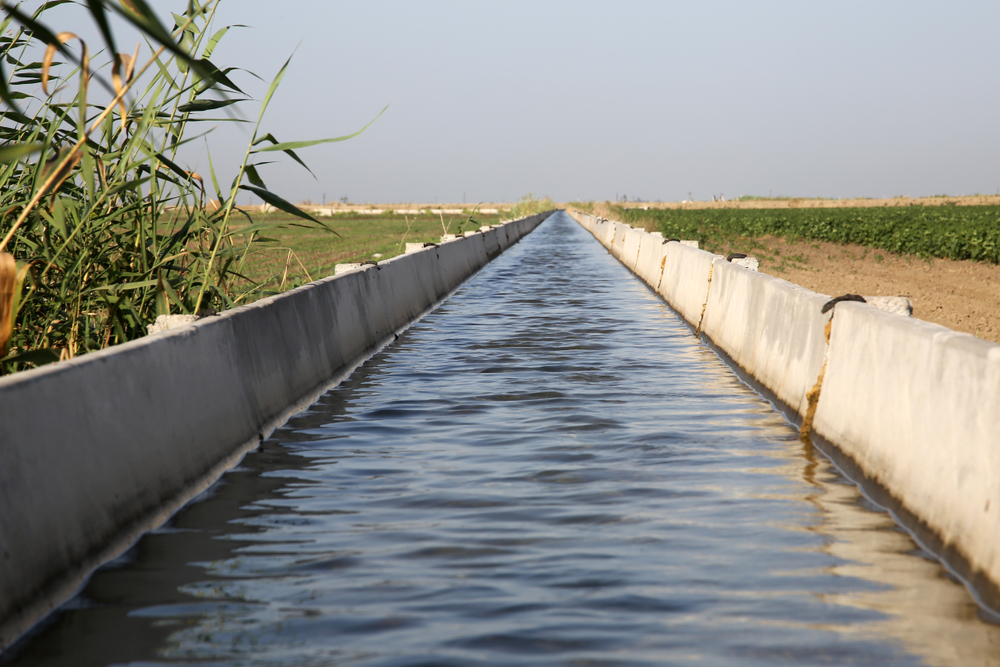In a state beleaguered by drought, high temperatures, and growing wildfire dangers, the idea of placing solar panels over irrigation canals to address both water loss and climate pollution is finally getting traction. Solar AquaGrid creators Jordan Harris and Robin Raj envisioned a game-changing solution that blends solar energy generation with water conservation.
The immense potential of this project was revealed in a study conducted by the University of California, Merced. If California’s 6,437 kilometers of canals were covered with solar panels, an estimated 63 billion gallons of water might be conserved while producing 13 gigatonnes of power – enough to power the whole city of Los Angeles from January to early October.
Project Nexus evolves from concept to reality
In California, where there is a lack of affordable land for energy development and a pressing need for water conservation, the notion of solar-covered canals has long been considered. However, it took a pioneering study by UC Merced to make this vision a reality.
Project Nexus evolved as a three-party collaboration involving the business, public, and academic sectors with the assistance of California Governor Gavin Newsom and the Turlock Irrigation District. The state agreed to provide $20 million in public cash for the development of solar-covered canals in California’s Central Valley.
Brandi McKuin, the principal researcher on the UC Merced study, emphasized the relevance of the initiative in answering critical concerns regarding the effects of this strategy, from evaporation reduction to improved water quality. Project Nexus attempts to create a template for wider deployment by better understanding the potential co-benefits.
Taking cues from India’s solar canals
While California is taking bold steps in embracing solar canals, it is not the first to do so. The Sardar Sarovar dam and canal project in Gujarat state pioneered the concept by bringing water to parched regions. Despite initial enthusiasm and promises of widespread solar canal coverage, the technology encountered difficulties, resulting in limited adoption.
Solar canal supporters in California, such as Jordan Harris, studied India’s experiences to improve their technique. Lessons from India’s initiatives have led the way for better materials and designs that solve maintenance and accessibility issues.
While the solar canal movement grows in popularity, it is acknowledged that the water infrastructure industry can be slow to adopt rapid change. Nonetheless, significant parties such as Representative Jared Huffman believe in the technology’s promise.
Representative Huffman’s efforts garnered $25 million for a pilot project under the Bureau of Reclamation, and climate advocacy groups are calling for the Bureau’s canals and aqueducts to be outfitted with solar photovoltaic energy systems as soon as possible. The anticipated impact is remarkable, with over 25 gigatonnes of renewable energy generated, nearly 20 million houses powered, and billions of gallons of water saved.
While covering all canals would be ideal, starting with major waterways such as the California Aqueduct and the Delta Mendota Canal makes a compelling case for rapid action. The moment has come to embrace this pragmatic and forward-thinking approach and pave the road for a greener, more climate-resilient future.
Solar panels over canals are no longer simply a theoretical solution to California’s water loss and climate change problems. Thanks to creative entrepreneurs and joint efforts, California is on the verge of transforming its water infrastructure to harness the power of the sun and save its precious resources, inspired by India’s experiences and armed with groundbreaking science.
We are highlighting this piece as part of our annual “Best Of” roundup of articles published at The Optimist Daily this year. Today’s focus is on the top Science solutions of 2023.











